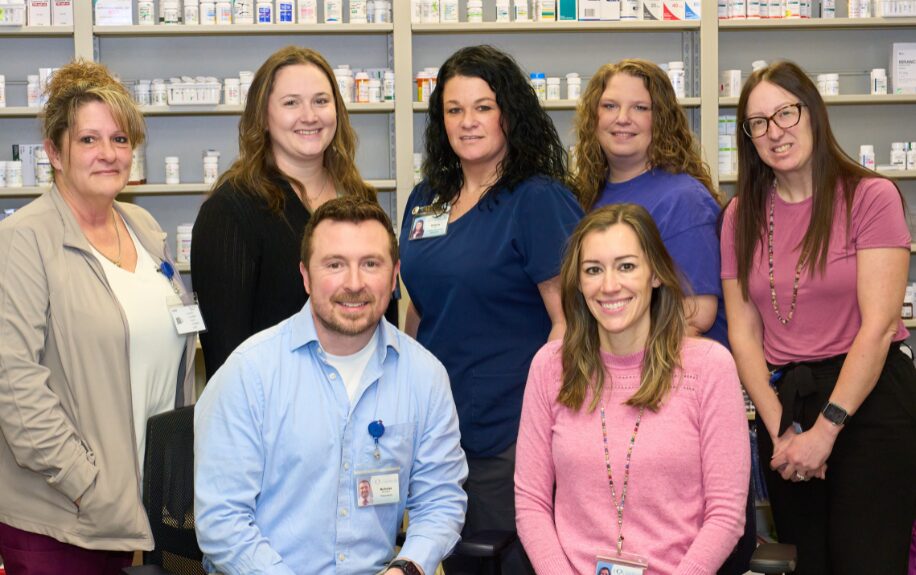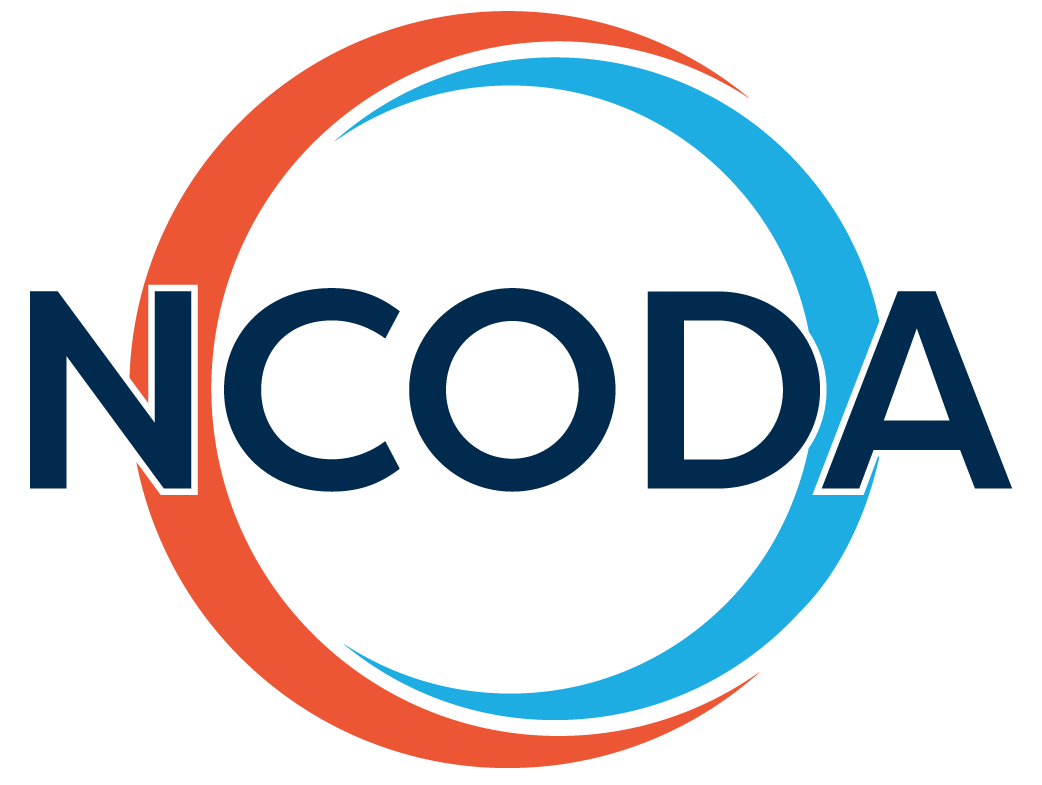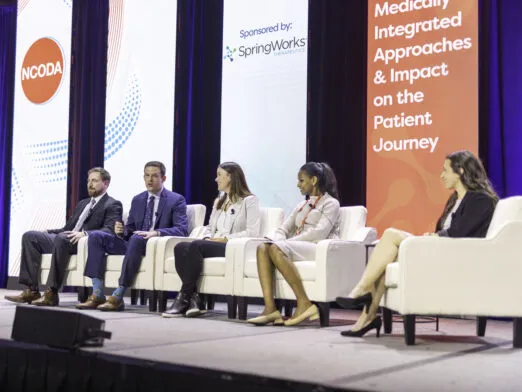Caring for Patients in Every Step of their Journey
Published Date: March 31, 2025

NCODA Editorial Team
Published: March 31, 2025
NCODA recently sat down with members of the pharmacy team at Hematology-Oncology Associates of Central New York (HOACNY) to discuss the advantages of a medically integrated practice in their experience. The pharmacy team at HOACNY has extensive experience working with patients in this model as their practice was one of the early adopters nearly 12 years ago while the term was still in its infancy. Jonas Congelli, RPh, Nick Bouchard, PharmD, Danielle Maciorowski, PharmD, and Beth Joss, CPhT, all shared insights based on their firsthand experiences in delivering high-quality, integrated care to patients. One aspect of the MIP model that was clearly an area of strength and pride for the HOACNY team was their ability to support patients and reduce their burdens. The level of patient support offered by the HOACNY team and ensuring patient satisfaction is an amazing example of NCODA members going the extra mile to provide the best possible care.
What has the journey been like for your organization in leveraging an MIP model?
Jonas- When we started, we may not have called it medically integrated but that was always our intent and how we started this effort whether the term existed or not at that time. The catalyst for us was that we are part of the practice and part of the team. For us, it has always been a way to clarify that we operate differently from a mail order or retail pharmacy setting.
I think the terminology came around shortly after we started the Patient RX Center, and we started in 2013. We had a pharmacist, nurse, and a pharmacy technician and their goal was to take care of patients in a manner that was different than the landscape at that time. For us, it was more of an evolution in how we explained the process to others, but the model has always been integrated even before we started dispensing as an organization.
We started to see the disconnect that was happening in the space, particularly with the increase in oral oncolytics. You could see the model of mail order was broken. You saw the amount of time that staff was spending on prior authorization, financial assistance, and the delay in getting medication to patients that came from that, and we believed we could do it better.
What are the main benefits for patients receiving their medications directly from an MIP within an oncology practice and how does having an MIP improve patient adherence to their treatment plans?
Danielle- Overall care- not having to sit on an 800 number or moving through a process with someone that isn’t consistent from engagement to engagement. We have access to their medical records, labs, and we know who they are working with. All of these provide patients with more consistency and the ability to keep a closer eye on things both in terms of adjustments and waste. We can manage care within the practice and know everything that’s going on with a patient.
Jonas- When we dispense, we know the patient is taking that exact medication at the exact dosage. In a mail order system, there is a huge amount of waste given how often there are dose changes, holds, and discontinuations that happen.
Nick- What we do is a very proactive approach in terms of reaching out prior to refills and monitoring any need for adjustments regularly. Traditional models are not able to be reactive and changes may occur after a dose is sent. Then they are trying to correct later and may have to resend new dosing.
Could you share any examples where the pharmacy team’s intervention made a significant difference in a patient’s treatment?
Beth- One difference is that we see our patients in person and have an ongoing relationship with them. As an example, there can be side effects that they didn’t mention or may not know to bring up. Some medications may cause redness or peeling, our ability to notice these things and raise the questions of “are you using the creams you have” and identify changes in dosing or personal care can make a tremendous difference. Being able to ask how they are feeling and doing overall also opens the opportunity to discuss any challenges they are facing.
What role does the MIP team play in helping patients navigate insurance authorizations and financial assistance?
Danielle – We really try to remove any stress or worry from the patient and handle things behind the scenes, involving them only when we need to. It’s a high-anxiety situation already for them when dealing with a diagnosis. We’re working as soon as we receive the prescription to get prior authorization. If we need to appeal, we’ll do that. If we need a peer-to-peer, we’ll set that up with a provider.
We estimate what the copay is, and our goal is to always keep their costs at zero out-of-pocket if at all possible. We’ll seek to find a grant or from a manufacturer whenever possible and we do all that on behalf of the patient. We only involve the patient after we have worked out all the details and when on what we might need information from them. There can be a lot of work otherwise for our patients, and it can be very confusing.
Beth – We also stay on top of Medicare requirements and programming that is required or on the horizon. With all the changes in the last few years with caps and payment plans and smoothing of costs it’s important to help patients understand their coverage. Knowing their options is essential, and it allows them to have a better voice in their choices.
Jonas – Our pharmacy team obtains prior authorizations for every prescription whether we fill it or not. We get that prior authorization in place to ensure that our patients get their needs met. It’s a patient first initiative that we provide even if we are required to send a prescription out because of distribution requirements. Our team is doing huge things to support patients, and the level of service is invaluable to them. Our patients deeply appreciate the work of this team.
The HOACNY team emphasized that maintaining visibility within the practice is critical to delivering the highest level of care. When prescriptions are sent outside the practice, the continuity of care is inevitably disrupted. This sentiment captures the essence of a medically integrated practice—ensuring patients receive seamless, personalized care at every step. By managing treatment entirely within the practice, the MIP model unlocks its potential to elevate patient outcomes, improve care coordination, and reduce unnecessary stress.
As HOACNY and other practices continue refining their approaches, their unwavering commitment to patient-first care drives innovation and excellence in oncology treatment. We extend our gratitude to the pharmacy team at HOACNY for sharing their insights and look forward to highlighting more inspiring stories in this new series from NCODA members and practices across the country that are transforming care through coordinated treatment and support.






